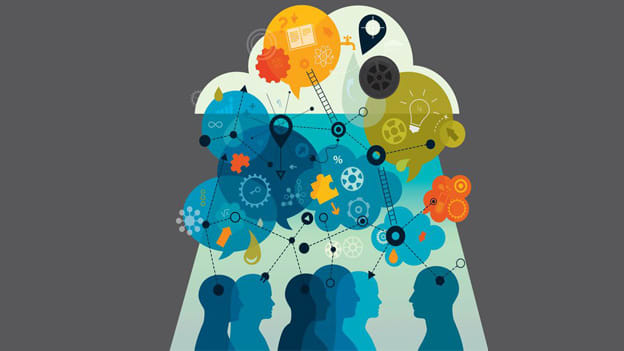4 pillars to create a positive and constructive learning culture

Create the Future Read similar articles

As leaders of the organizations, we often think of questions about our organizational culture and they include questions such as:
- What goes into making a high impact learning culture?
- What is the role of senior leaders in institutionalizing learning culture?
- How do you integrate the personalized learning styles to the culture?
- What role does HR/learning professionals play in building high impact learning culture?
These questions become even more pertinent in today’s scenario where continuous technological disruptions are pushing organizations to ‘learn’ new things and ‘unlearn’ things which are obsolete and mundane. Learning as a concept is evolving and shifting away from the legacy system- from being a monologue activity to becoming a holistic approach where employees drive learning which is personalized, quick and agile.
In today’s scenario, how fast people learn and how multi-skilled they are will determine the future success of organizations.
However, since one size doesn’t fit all, organizations are required to adapt fast and adopt such practices which create a high-impact culture of learning.
‘Learning culture’ is a set of organizational values, conventions, and processes, and practices that encourage individuals and the organization as a whole to increase knowledge, competence, and performance positively impacting business results. A number of factors go into creating a ‘ culture of learning’- from senior leader’s support, developing people’s capability to having integrated performance management systems.
Let’s look at four integral pillars that enable the positive, constructive culture based on shared learning:
1. Learning culture as an organizational KPI: It acts as the core of learning ecosystem where learning becomes the key organizational priority even at the higher echelons. It is considered as a critical element where senior leaders have ‘learning’ as their key KPI which is further cascaded down to other members in the team. When learning becomes an organization-wide initiative, its impact is far-reaching. Learning initiatives get due recognition and easy buy-in of senior leaders. And that’s what drives the culture of line partnership and shared ownership of learning outcomes.
2. Business alignment: Learning needs to be aligned with the business strategy and KPIs. Alignment of learning is the ability to consultatively engage with key business stakeholders to understand and work along with them to provide them the right learning solutions and also ask the right questions.
Organizational assessment is a critical annual process which can give insights around business needs and existing gaps. The entire process results in coming up with a strategic learning plan for employees to create their personalized IDPs which remains aligned to the business outcomes and personal aspirations.
3. Learning centricity: Today’s workforce comprises a huge percentage of millennial who enter the workplace with diverse learning needs. They desire new-age methodologies, specialized programs, and social platforms to learn new things. Therefore, leveraging on new age learning methodologies and by making learning relevant by connecting it with learner’s work routine would see a better pay-off.
Experimentation with different learning approaches like 70~20~10 philosophy would reap great benefits. The efforts should be to make learning as personalized as possible for the learners; in this respect having targeted, individualized development plan and corroborating action learning projects would be instrumental in driving effective learning. In addition to it, curated content should be made available to learners at all times and individual learners should be allowed to co-create their own learning paths.
4. Learning & Development Governance: The practice where all managers are trained to be coaches to guide employees, result in a sustainable learning culture. To train managers, leadership development workshops can be held to prepare them to be good mentors. They can share their knowledge and learning on formal as well as informal platforms. Leaders can encourage employees to learn more by building a robust reward mechanism. Furthermore, performance management system which lays the foundation for goal setting activity becomes a catalyst for high impact development when integrated with learning.
A proverb “it takes a village to raise a child” stands closer to ‘building a culture of learning’- Building a high-impact culture of learning is not just learning professional’s job rather a lot of elements need to assemble to contribute to this. Senior leader’s support is important to nurture the learning environment. Furthermore, adequate resources and systems to practice learning need to be easily accessible to the learners. Last but not the least, learners need to take ownership of their own learning. Without learning a new set of skills, survival in this super disruptive world would be challenging for both the employees and organizations.
-------------------------------------------------------------------------------------------------------------------------------
(Insights in this article are curated by Dr. Arunima based on a webcast.)





